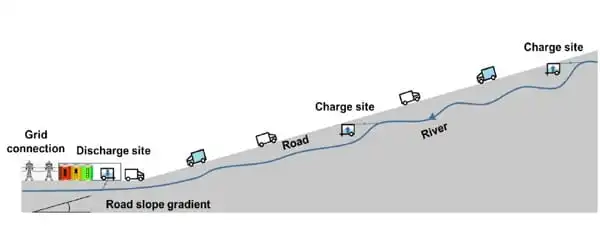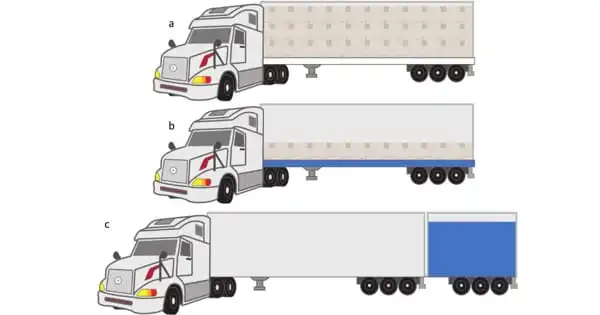Researchers have created an innovative hydropower technique based on electric trucks that could give a flexible and clean option for generating electricity in mountainous areas. Mountain locations offer a tremendous hydropower potential that traditional methods cannot fully exploit. Julian Hunt, an IIASA researcher, and an international team of researchers created an innovative hydropower system based on electric vehicles that could give a flexible and clean option for electricity generation in mountainous areas.
Hydropower will certainly become more important as a renewable energy source as we move toward a more sustainable future. Despite its potential, hydropower technology improvement has been modest over the last century. Today’s conventional methods rely on two connected reservoirs with varying water levels, where the potential energy of the water is transformed into electricity.
Traditional hydropower systems rely on two linked reservoirs with varying water levels, and the potential energy of the water is turned into electricity. The potential for generating electricity from a tiny stream of water is significant in steep mountainous locations; yet, the hydropower potential of these regions remains untapped since it requires storage reservoirs, which have environmental and socioeconomic consequences.
The optimal system arrangement is in hilly regions with steep roads, where the same electric vehicles may be used to generate hydroelectric power from multiple places. This raises the likelihood that water will be available.
Julian Hunt
The potential for generating electricity from a tiny stream of water is significant in steep mountain regions; yet, the hydropower potential of these locations remains untapped since it requires storage reservoirs, which have environmental and socioeconomic consequences. Julian Hunt, an IIASA researcher, and an international team of researchers created Electric Truck Hydropower, a novel technology that could become a vital way for electricity generation in steep mountainous terrain. The study’s findings have been published in the Energy Journal.
Electric Truck Hydropower would leverage existing road infrastructure to convey water down the mountain in containers, then use the electric truck’s regenerative braking to convert the potential energy of the water into electricity and charge the truck’s battery. The generated energy may subsequently be sold to the grid or used to convey other commodities by the truck itself. Electric Truck Hydropower might also be used to generate electricity in conjunction with solar and wind resources, as well as to provide energy storage services to the grid.

“The optimal system arrangement is in hilly regions with steep roads, where the same electric vehicles may be used to generate hydroelectric power from multiple places. This raises the likelihood that water will be available” says Hunt.
The suggested technique is an innovative, clean source of electricity that competes with solar, wind, and traditional hydropower. According to cost estimates, the levelized cost of Electric Truck Hydropower is US$30-100 per MWh, which is significantly less than the levelized cost of conventional hydropower, which is US$50-200 per MWh. The environmental implications of Electric Truck Hydropower are likewise substantially lower than those of traditional hydropower.
“This method does not necessitate the construction of dams, reservoirs, or tunnels, and it does not interfere with the natural flow of the river or fish passage. The concept requires just existing roadways, charging and discharging stations comparable to tiny car parks, a grid-connected battery facility, and trucks “Hunt explains.
In terms of the technology’s worldwide reach, the research team predicted that Electric Truck Hydropower could create 1.2 PWh of electricity per year, which is equivalent to nearly 4% of global energy consumption in 2019. The method has the potential to unlock previously untapped hydropower potential on steep mountain ranges. The Himalayas and the Andes are the regions with the most potential.
“Because of its tremendous flexibility, it is an intriguing electricity generation alternative. For example, if a country is experiencing an energy crisis, it can purchase a number of electric trucks to create hydropower. Once the crisis is passed, the trucks will be able to convey freight” Hunt draws a close.
Electric Truck Hydropower would leverage existing road infrastructure to convey water down the mountain in containers, then use the electric truck’s regenerative braking to convert the potential energy of the water into electricity and charge the truck’s battery. The generated energy may subsequently be sold to the grid or used to convey other commodities by the truck itself. Electric Truck Hydropower might also be used to generate electricity in conjunction with solar and wind resources, as well as to provide energy storage services to the grid.





